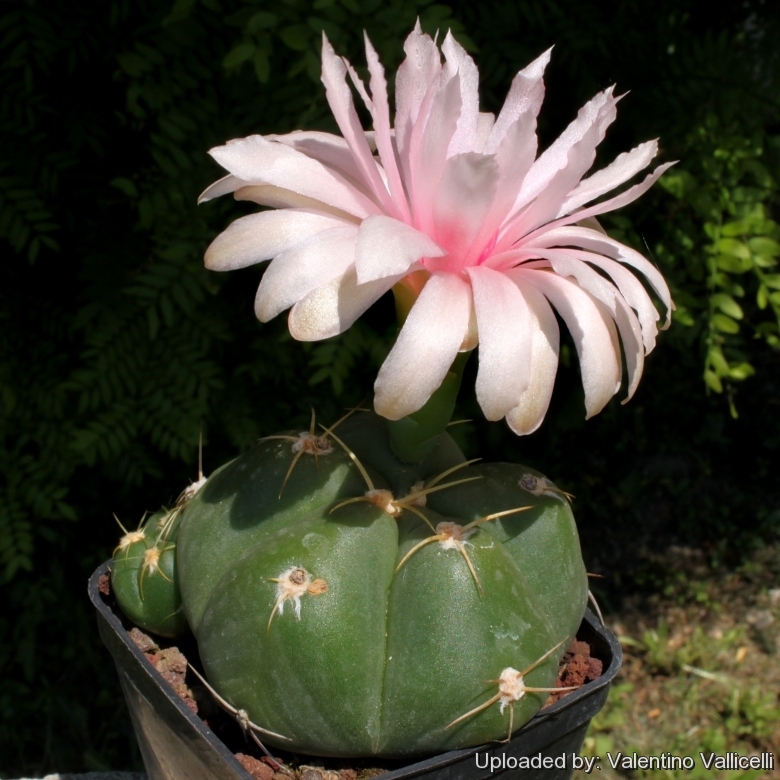
Gymnocalycium horstii Photo by: Valentino Vallicelli
Origin and Habitat: Uruguay, East Paraguay, South Brasil and Northeast Argentina.(extent of occurrence is 40,000 km2)
Altitude: It grows at elevations up to 300 m asl.
Habitat and Ecology: Gymnocalycium horstiiSN|18875]]SN|18875]] grows on rocky outcrops in pampa grasslands. It has a relatively wide range, but the species is scarce and the population severely fragmented. The area where it occurs is under several pressures, such as cattle grazing, agriculture, fire and illegal collection.
Synonyms:
See all synonyms of Gymnocalycium horstii
Common Names include:
ENGLISH: Sider Cactus (for the shape of the spider-like spines)
Description: Gymnocalycium horstiiSN|18878]]SN|18875]] is a distinctive large cactus, minimally spined with a green ball-shaped body. Usually solitary or slowly clustering as they age. Two subspecies are recognized, the nominate form and subsp. buenekeri (Swales) P.J.Braun & Hofacker. The latter was previously considered a good species, genetic studies are required to see if it should be raised to species level again.
Stem: Smooth, globoid, shiny green, up to 20(-25) cm in diameter.
Ribs: 5-6 cm wide, rounded, somewhat acute, deeply furrowed.
Spines: Few (usually 5 of which one pointing downward others to the sides) , yellowish white, sparse, straight to slightly curved, definite and very irregular, up to 3 cm long.
Flowers: White, pale pink, pink or pale purplish up to 11 cm long and in diameter.
Fruits: Ovoid, blue-green.
Remarks: Gymnocalycium buenekeriSN|18875]]SN|18878]] and G. horstii are very similar if not identical, both have very similar great pink flowers and the same (usually) five ribbed appearance, and good yellow spines.
Subspecies, varieties, forms and cultivars of plants belonging to the Gymnocalycium horstii group
Bibliography: Major references and further lectures
1) Edward Anderson “The Cactus family” Timber Press, Incorporated, 2001
2) James Cullen, Sabina G. Knees, H. Suzanne Cubey "The European Garden Flora Flowering Plants: A Manual for the Identification of Plants Cultivated in Europe, Both Out-of-Doors and Under Glass" Cambridge University Press, 11/Aug/2011
3) David R Hunt; Nigel P Taylor; Graham Charles; International Cactaceae Systematics Group. "The New Cactus Lexicon" dh books, 2006
4) Larocca, J. & Machado, M. 2013. Gymnocalycium horstii. In: IUCN 2013. "IUCN Red List of Threatened Species." Version 2013.2. <www.iucnredlist.org>. Downloaded on 17 February 2014.
 Gymnocalycium horstii Photo by: Prof. Ilham Alakbarov
Gymnocalycium horstii Photo by: Prof. Ilham Alakbarov Gymnocalycium horstii Photo by: Paolo Di Varena
Gymnocalycium horstii Photo by: Paolo Di Varena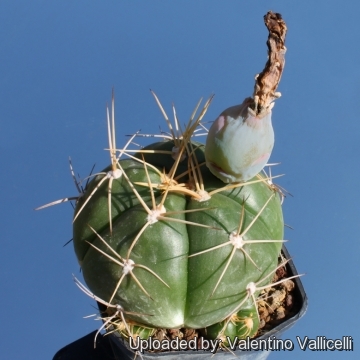 Gymnocalycium horstii Photo by: Valentino Vallicelli
Gymnocalycium horstii Photo by: Valentino Vallicelli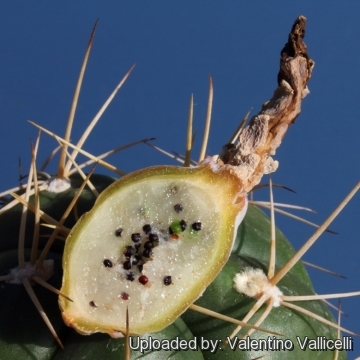 Gymnocalycium horstii Photo by: Valentino Vallicelli
Gymnocalycium horstii Photo by: Valentino Vallicelli Gymnocalycium horstii Photo by: Cactus Art
Gymnocalycium horstii Photo by: Cactus Art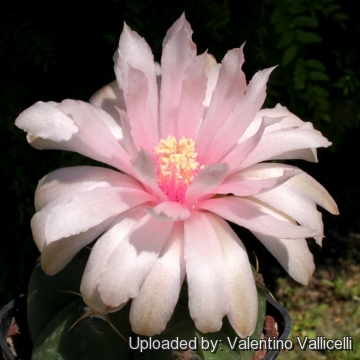 Gymnocalycium horstii Photo by: Valentino Vallicelli
Gymnocalycium horstii Photo by: Valentino Vallicelli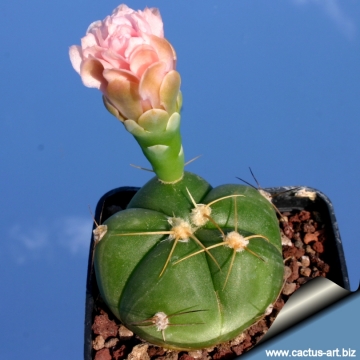 Gymnocalycium horstii Photo by: Cactus Art
Gymnocalycium horstii Photo by: Cactus ArtSend a photo of this plant.The gallery now contains thousands of pictures, however it is possible to do even more. We are, of course, seeking photos of species not yet shown in the gallery but not only that, we are also looking for better pictures than those already present.
Read More... Cultivation and Propagation: Very easy to grow, this plants offers no cultivation difficulties. Summer grower needs moderate to copious waterings in summer (It enjoy more water than the average cactus). Quite frost resistant if kept dry in winter -4° C. Feed with a high potassium fertilizer in summer. Sun Exposure: Light shade. (Keep out of hot, direct sun or will burn badly but hot, blazing afternoon sun taking it well, just bronzing a bit)
Propagation: Seeds (seldom produces offsets)


















